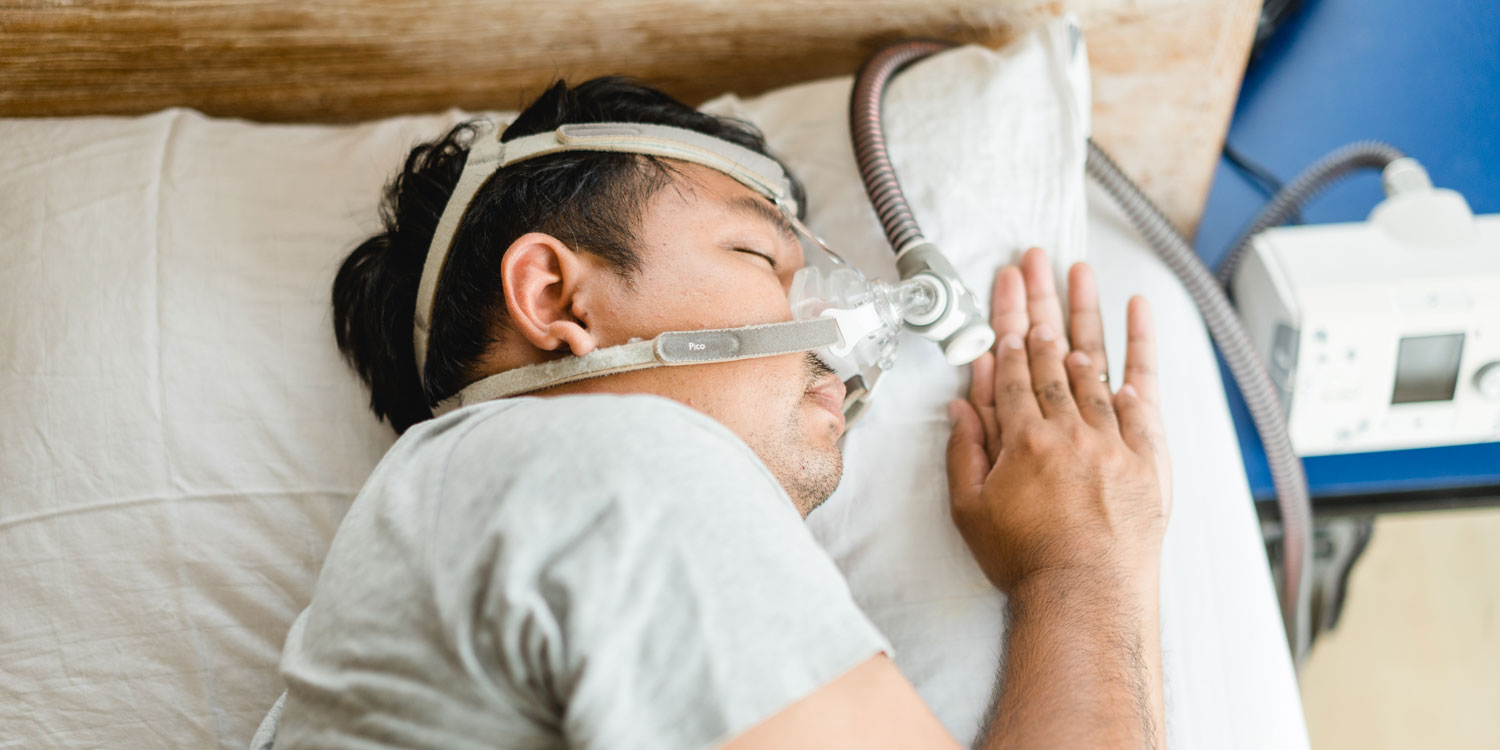
There are a few ventilation modes that can be used at home:
- CPAP/BIPAP ventilation with a face mask
- CPAP/BIPAP ventilation with tracheostomy
CPAP stands for Continuous Positive Airway Pressure. This means that a certain level of positive airway pressure is constantly being delivered.
BIPAP stands for Bilevel Inspiratory Positive Airway Pressure – BIPAP basically operates on two different positive airway pressures, and it tends to make breathing easier compared to CPAP as it offers two different levels of positive airway pressure. One higher and one lower positive airway pressure.
Both, CPAP and BIPAP are very similar ventilation modes.
CPAP and BIPAP are required for many people suffering from sleep apnoea. However, the number of people requiring CPAP/BIPAP with a face mask is increasing.
Another term for CPAP/BIPAP ventilation with a facemask is NIV = Non-Invasive Ventilation
Invasive ventilation is mechanical ventilation with a breathing tube or endotracheal tube or via tracheostomy.
CPAP/BIPAP ventilation with a face mask (NIV) is either used to prevent invasive mechanical ventilation with a breathing tube, and it’s also often being used after mechanical ventilation with a breathing tube (endotracheal tube) or tracheostomy when intermittent ventilation support is required.
At home CPAP/BIPAP mask ventilation (NIV), it often goes hand in hand with requiring oxygen therapy as well during the times when you or your family member are off CPAP/BIPAP mask ventilation (NIV). Oxygen may also be required during CPAP/BIPAP.
NIV is a simple method of assisting a client’s breathing without using an invasive airway. During NIV the client is usually wears a tightly fitted nasal or faced mask that is attached via wide-bore tubing or portable ventilator. An interface (tight seal) is created between the clients face and the mask. The ventilator produces a rapid flow of gas (air or oxygen) that passes down the tubing to the patient mask interface and exits via a small expiratory valve.
The effect of the fast-flowing gas passing through a small valve creates a back pressure that is transmitted to the patients’ lungs, so opening the airways and allowing air or oxygen to enter. The positive pressure can be continuous or intermittent.
Neuromuscular disease/chest wall deformities – Neuromuscular conditions that damage the respiratory muscles, or their supplying nerves result in reduced lung volumes and may cause chronic respiratory failure that is characterised by respiratory distress and altered arterial blood gas levels (raised levels of arterial carbon dioxide).
The underlying condition may itself be stable; for example, long-term complications associated with polio or spinal cord injury, or it may be progressive, as in the case of muscular dystrophies for example.
Chest wall deformities such as scoliosis or kyphoscoliosis may lead to chronic respiratory failure owing to altered lung mechanics, reduced tidal volumes and reduced matching of ventilation and perfusion in the lungs. Thus, inspired air reaches areas of the lung where there is a poor arterial blood supply, or areas of the lung with a good blood supply do not receive inspired ar.
Overall, the ability to maintain good arterial oxygenation and excrete arterial carbon dioxide is reduced.
The application of NIV will potentially improve tidal volumes, reduce the effort of breathing and thus provide symptomatic support and possibly delay the onset of end-stage respiratory failure (Shneerson and Simonds, 2002).
For some patients, for example, those with high spinal cord lesions, the use of NIV may be essential life support. NIV might be indicated to relieve symptoms of respiratory distress and sleep disturbance and improve quality of life. Patients with high levels of arterial carbon dioxide might benefit from this treatment (Clini et al, 2002).
The standard equipment supplied to the patient having home NOV includes a portable ventilator with mains lead, wide-bore ventilator tubing, a face or nose mask, and an adjustable headset for attaching the mask. Additionally, there may be a battery pack for travel or, for mains failure, a heated humidification unit, or a connector to allow the entrainment of oxygen into the ventilator circuit.
NIV is beneficial for managing a whole spectrum of acute and chronic respiratory conditions. The best evidence relates to its use in acute and acute-on-chronic respiratory failure.
Conditions that benefit from domiciliary NIV:
- Obstructive sleep apnoea
- Respiratory problems associate with neuromuscular disease and chest wall deformities
- Chronic Obstructive Pulmonary Disease
- Tracheostomy ventilation with CPAP/BIPAP is a desired ventilation mode because it’s usually the ventilation mode that’s tolerated best by patients with tracheostomies and mechanical ventilation needs.
- Tracheostomy and CPAP/BIPAP ventilation often goes hand in hand with a long-term stay in intensive care.


